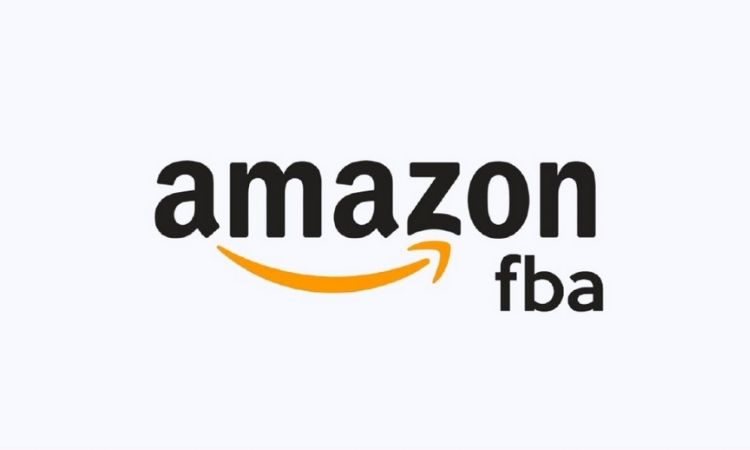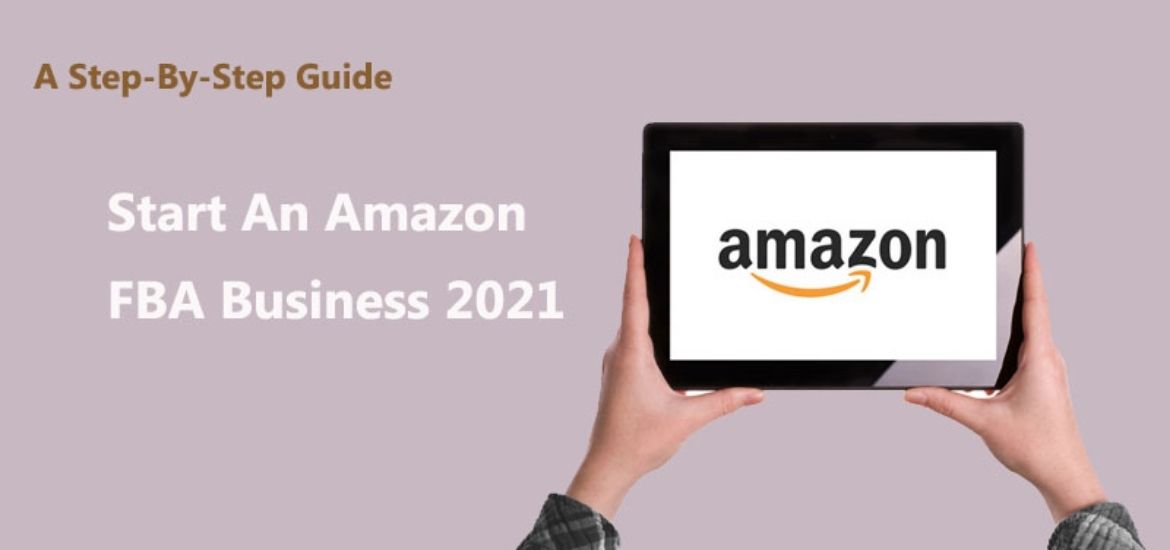Are you thinking of purchasing an Amazon FBA business? It is commonly known that selling on Amazon can be quite successful for entrepreneurs who choose to take it a step further. Many people, on the other hand, prefer to buy an existing firm rather than starting from the ground up.
For millions of Amazon sellers, Fulfillment by Amazon (FBA) is the preferred option. Simply because the retail behemoth charges a monthly fee to handle customer support, inventory management, and shipping and delivery operations.
This frees you up to improve your marketing efforts. You’ll also boost your brand’s visibility and seller performance in the marketplace.
Is it better to create your own FBA business or to purchase an existing FBA store? We’ll go over the advantages and disadvantages of both scenarios, as well as when it’s better to start from scratch and how to buy an Amazon FBA business in this tutorial.
What is Amazon FBA Business

Sellers can use Amazon’s complete supply and delivery procedures through Fulfillment by Amazon (FBA). This means you won’t have to worry about stock management or shipping.
All you have to do now is pack and transport your inventory to an Amazon warehouse. Then, in the marketplace, upload your item listings. Amazon also handles packing, shipping, and customer care when a user purchases goods.
The FBA program provides the following benefits to sellers:
- Your entire inventory will be eligible for Prime.
- Because of Amazon’s guarantee, customer evaluations have improved.
- Increases the likelihood of winning the Buy Box
- Amazon FBA business is in charge of customer service.
- The items are delivered on or before the scheduled delivery date.
Amazon has a massive network of fulfillment centers around the United States, as well as in several other countries, to properly handle all of this. Tens of thousands of SKUs are housed in each warehouse, which is all controlled by complicated logistics systems that utilize both people and robots.
If you’ve ever bought on Amazon, you’ll note that many items are sold by third-party merchants yet “Fulfilled by Amazon.” This indicates that the item is owned by the third-party company you’re buying from, but Amazon holds it in their warehouses and ships it to the buyer, as opposed to alternative ways like drop shipping or a 3PL.
Before Starting an Amazon FBA Business

New sellers will definitely want to know what it takes to break into the Amazon FBA business marketplace when considering beginning an Amazon business. New sellers must fulfill the following steps in order to start an FBA business:
- Make a detailed plan document.
- Create an Amazon seller account and find a good product to sell.
- Make a financial plan.
- Promote yourself and your business.
Before acquiring merchandise and jumping into the Amazon FBA business marketplace, you must weigh the advantages and disadvantages of numerous options and develop a clear approach that aligns with your objectives. You’ll be able to build a list of priorities that will influence all of your business decisions if you do it this way.
One of the most important things to ask is if you want to go for super-fast growth or whether you want to be profitable as soon as feasible. An entrepreneur with a significant budget may be willing to invest heavily in several SKUs and not see a return for several months or even longer.
A fresh new Amazon seller with limited capital, on the other hand, may need to choose things that are likely to be lucrative much faster. The majority of sellers fall somewhere between the extremes of valuing only growth and valuing only rapid profit. It’s critical that each person choose what their FBA business objectives are.
The decision to either create a wholly new and innovative product (Gen product) or offer one that is comparable to what is currently on the market to meet existing demand is linked to the prior point.
How Much Money Do You Need to Start an Amazon Business

It all boils down to one question for some aspiring Amazon FBA business sellers: How much money do you need to start an Amazon business?
One Amazon seller may spend $3,000, while another may put $50,000 into their business. As we previously stated, your budget will play a big role in determining which technique is ideal for you.
To establish a new Amazon FBA business, Steven suggests saving aside at least $5,000. Having said that, it’s worth noting that having a greater budget will allow you to develop and flourish more swiftly. Additionally, some vendors may choose to start with $5,000 and then increase their investment as they achieve results.
It’s crucial to evaluate when you’ll start taking money out of your Amazon FBA business, in addition to the start-up capital required to get your new Amazon FBA business off the ground. If you rely on your Amazon business to pay your rent and other expenses, for example, the amount of money you have available for reinvestment and growth would be drastically reduced.
In general, it’s not a good idea to think of your Amazon FBA business as a short-term cash flow generator. It is preferable to start your business when you still have another source of income to meet your living expenditures. It’s only after your Amazon FBA business has grown to the point where you can make money off the table for personal costs without jeopardizing its growth potential.
Finally, it’s crucial to note that an Amazon FBA business is just that: a business, therefore it’s not without risk. As a result, if investing $5,000 (or whatever amount you want to invest) will bankrupt you if things go wrong, you should think to evaluate whether you’re ready to enter the Amazon FBA business marketplace.
If you’re living paycheck to paycheck, it might be a good idea to save some money until investing $5,000 isn’t such a daunting prospect. Even if Amazon FBA business is a goldmine of a business opportunity, you should make sure you’re ready before you get in.
Amazon FBA Business Ideas When Starting with a Small Budget
Examine the Competition and Validate Market Demand

We noted in the last section that launching a product that is similar to one that is already selling successfully is often easier and less expensive. If children’s watches are selling thousands of units per month and there isn’t much competition (see below), there’s a decent possibility you’ll be able to sell a similar children’s watch successfully as well.
So, how do you know if there’s a demand for a particular item on Amazon FBA business?
In response to Amazon sellers’ desire for market data, a number of companies have developed software to meet this need. Each of these software applications serves the same purpose: they collect and show data on practically all Amazon FBA business products, such as sales volume, number of reviews, and monthly revenue. Some of these programs can also provide information on product seasonality, sales trends, and review rates, among other things.
This allows vendors to get precise, well-organized data on the exact demand and competition for a certain product search. If you search for a product and find that the average listing on page one sells 2,000 units each month with only 15 reviews, it’s a winner.
Source Your Product
It’s time to source the product and see if the figures add up after determining if there’s enough demand and little competition.
Alibaba is the most comprehensive sourcing platform for both small and large organizations. Consider Alibaba to be the Amazon FBA business of the business world. You can obtain quotes from numerous different suppliers for just about any product you can think of, even if you have no prior internet experience. This makes determining the cost of your product if you decide to proceed simple and uncomplicated.
After you’ve determined the pricing of your goods, you may compare it to Amazon’s average prices. Calculating the difference between sourcing and selling prices for various things might help you figure out which ones to avoid and which ones appear to be profitable.
You won’t be able to make much (or any) money if an item costs five dollars to obtain but only sells for eight dollars on Amazon FBA business. You’ll have an excellent chance of launching a profitable product if you can find one for two dollars and sell it for fifteen.
Check If Your Product Idea Falls Within Your Budget
Along with ensuring that your product selection is profitable, it’s also critical to ensure that it is within your budget. If the required start-up capital exceeds your budget, even a good product idea can be prohibitive. Of course, because everyone’s budget is different, this decision must be made on an individual basis.
It’s vital to note that, in addition to acquiring your product, there will be a slew of other startup costs. To increase sales, you’ll most certainly need to pay for excellent product photography, conduct promotions, and run advertising campaigns. Later in this section, we’ll go into budgeting for these items in greater detail.
Differentiate Your Product

It’s a smart place to start by emulating successful goods from other companies, but you shouldn’t stop there. Once you’ve identified a successful competitor’s listing, you should aim to improve on what’s already available in the Amazon FBA business marketplace.
You don’t have to reinvent the wheel to provide a greater product. Rather, seek simple methods to differentiate your product from the competition by giving it a competitive advantage. Reading your competitors’ Amazon reviews, particularly the unfavorable ones, is one way to achieve this. Consider what you can do to remedy a persistent complaint about a specific feature of their product if it occurs frequently.
Assume you’re planning to offer yoga mats. Before you start sourcing your first product, look at the best sellers in that category and try to figure out what the main sources of consumer discontent are. Perhaps you’ll discover that clients find the mats stinky, too slippery and that they fall apart after only a few weeks. You’ll have a better chance of succeeding with your new product if you can create a yoga mat that overcomes these three issues.
While conducting exhaustive market research and designing a high-quality product can increase your chances of success, there is no way to guarantee success. According to Steven, one product will succeed, one will break even, and one will fail out of every three introduced.
Additional Tips
In addition to the guidelines listed above, there are a few other pointers to consider while sourcing products.
- Technology products should be avoided.
- Keep in mind the tradeoff between low prices and competition.
- Prior to launching, order product samples.
- At least 30% of your budget should be set up for marketing.
- Pay attention to your inner feelings.
It should come as no surprise that technological products are more complicated than non-electronic products. Aside from the considerable breaking potential, a certain percentage of your consumers will inevitably be perplexed and have numerous queries. Not only may this cause problems, but it can also result in a high number of returns, negative reviews, and customer service queries.
It’s therefore not surprising that lower-cost product categories will face greater competition than higher-cost product categories. While having a product that costs a dollar per unit to make is fantastic, you must be prepared to compete with a slew of other vendors who are also drawn to the product’s low start-up costs.
Because many of your potential competitors will be unable or unwilling to invest in competing items, launching a more expensive product will obviously require more start-up money. However, you’ll be able to enjoy higher defensibility against other sellers. When it comes to deciding whether to launch a less priced or more expensive product, there is no one-size-fits-all solution. It all boils down to your money and objectives.

It’s critical to order product samples before establishing your business, regardless of what you want to sell. You risk obtaining low-quality products that will utterly destroy your listing if you don’t receive samples from your supplier and thoroughly evaluate them.
Going with your gut doesn’t imply you should disregard all of the data-backed advice we’ve provided thus far. Rather, it is using numbers to narrow down your product options before relying on your gut to make a final decision.
Despite the fact that software is incredibly beneficial for extracting critical information from Amazon FBA business Amazon FBA business and presenting it in a straightforward style, it isn’t particularly useful for comprehending the nuances that go into a listing’s success. In many circumstances, your own understanding of your target audience will be considerably more beneficial than any technology-based technique.
When you are experienced with the market, trusting your gut is especially important. It will be much easier for you to predict what will sell well and what will not if you are a part of your target market. Because there is a limit to how much assistance statistics can provide at times, it’s always a good idea to factor in your own judgment.
Conclusion
Now that Amazon has matured, both investors and entrepreneurs have discovered that Amazon businesses offer excellent investment prospects. This is fantastic news for people who have created a successful Amazon FBA business.
Today’s marketplace for buying and selling Amazon businesses is growing. Whether you’ve constructed a little store with a few products or a vast empire with thousands of SKUs, there’s bound to be someone who wants to buy what you’ve made.
Read more:
- Tik Tok Ads for eCommerce: New Marketing Trends in 2022
- 10+ Best Twitter Analytics Tools to Drive Your Conversions Effectively
- Stop Making These Tik Tok Marketing Mistakes To Boost Sales Crazily in 2022
- Top 15+ Deadly Google Ads Mistakes That Waste Your Money
- Top Powerful Content Writing Tools For SEO to Generate Sales 2022

